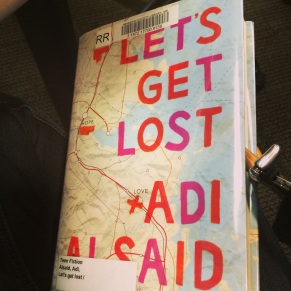I read a lot of realistic teen fiction. That may sound pretty benign, but when it comes to teen fiction “realistic” can seem like code for “issues.” So many of the teen books I read are about abuse, poverty, trauma, risky behavior, and bad decisions that lead to terrible consequences. Tough Topics, I used to call them when I worked in a library. I had a huge bibliography of these books divided by subject. It was, frankly, depressing. My reading list can really get a person down.
This summer, I took a break from serious stories. I spent my summer reading the fluffiest YA romance novels I could find. One after another. I couldn’t get enough happily ever afters. Even when the path to that HEA was completely cheesy, I would keep reading and select another silly book when I was through. Sometimes that’s what you need. Or, at least, sometimes that’s what I need.
For those of you looking for similar books, I offer you the three standout teen romances I read this past summer:



- The Unexpected Everything by Morgan Matson – An overachiever has her summer plans disrupted and finds herself finding happiness where she least expected it. Maybe that sounds cheesy, but I really enjoyed this story that explored family and friendships in addition to having a sweet romantic story line.
- Shuffle, Repeat by Jen Klein – Reluctant friends with divergent taste in music find romance in this cute story. I have a particular weakness for books that feature indie music, so this was a fun read for me. There’s even a playlist to go along with the book.
- The Sun is Also a Star by Nicola Yoon – Yes, technically this book doesn’t even publish until November, but I read an advance reader’s copy this summer so I’m counting it. It is easily one of my favorite YA novels of 2016, and it’s a National Book Award finalist. In addition to the romantic adventure that takes place in one day, this book also takes on some serious topics like race and immigration.
An one more bonus recommendation for those of you who prefer actually-published-for-grown-ups books: Dress Shop of Dreams by Menna van Praag is a sweet, magical story about second chances. Worth reading for a bit of HEA fluff that isn’t about teenagers, if that’s your thing.


 “Inspired by a true story.” These were like magic words to me as a teen reader. I loved reading about real historical figures and events, but nonfiction never kept my interest. So most of my knowledge of history came from historical novels. As a teen I couldn’t get enough of novelized versions of kings’ and queens’ lives, of wars and tragedies, and whatever else I could find.
“Inspired by a true story.” These were like magic words to me as a teen reader. I loved reading about real historical figures and events, but nonfiction never kept my interest. So most of my knowledge of history came from historical novels. As a teen I couldn’t get enough of novelized versions of kings’ and queens’ lives, of wars and tragedies, and whatever else I could find. Then there are the books that introduce me to bits of history that I didn’t know about before.
Then there are the books that introduce me to bits of history that I didn’t know about before.  It’s about listening and humility.
It’s about listening and humility.

 I’ve had a bit of extra reading time over the past couple of days as I’ve mostly been stuck in a jury waiting room. I didn’t really think about my reading choice for the first day of jury duty; I just grabbed a book from my library stack. How was I to know that I’d grabbed a road trip novel that typifies a wandering spirit on a day when I was confined to an underground room? Despite the circumstances, I did enjoy the story. And I had plenty of time to read it. ;)
I’ve had a bit of extra reading time over the past couple of days as I’ve mostly been stuck in a jury waiting room. I didn’t really think about my reading choice for the first day of jury duty; I just grabbed a book from my library stack. How was I to know that I’d grabbed a road trip novel that typifies a wandering spirit on a day when I was confined to an underground room? Despite the circumstances, I did enjoy the story. And I had plenty of time to read it. ;)



